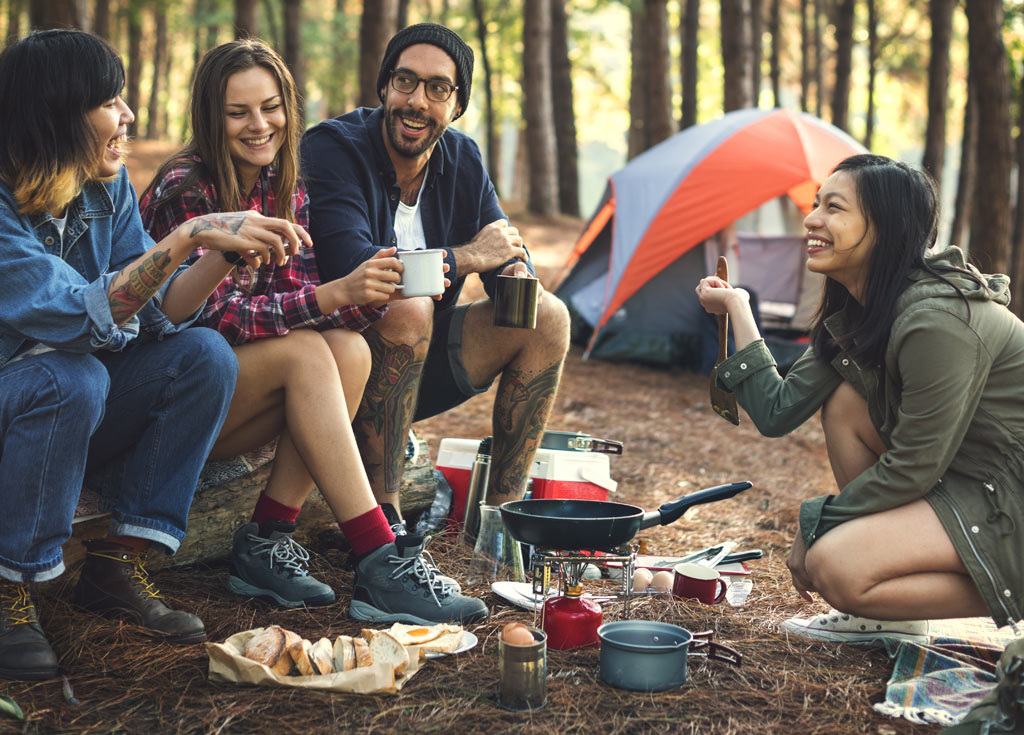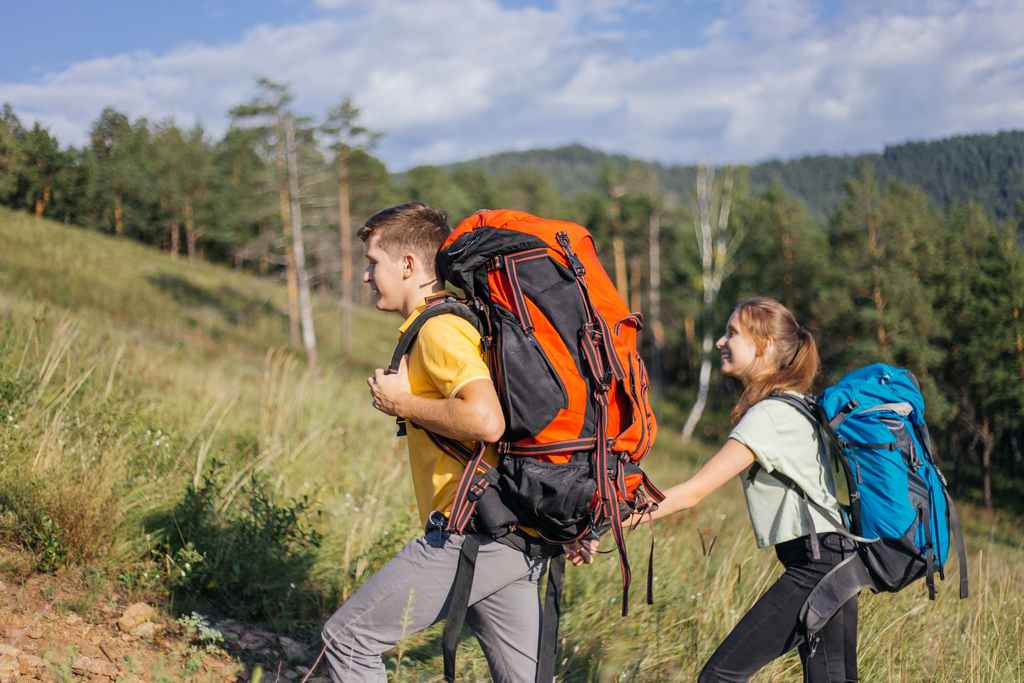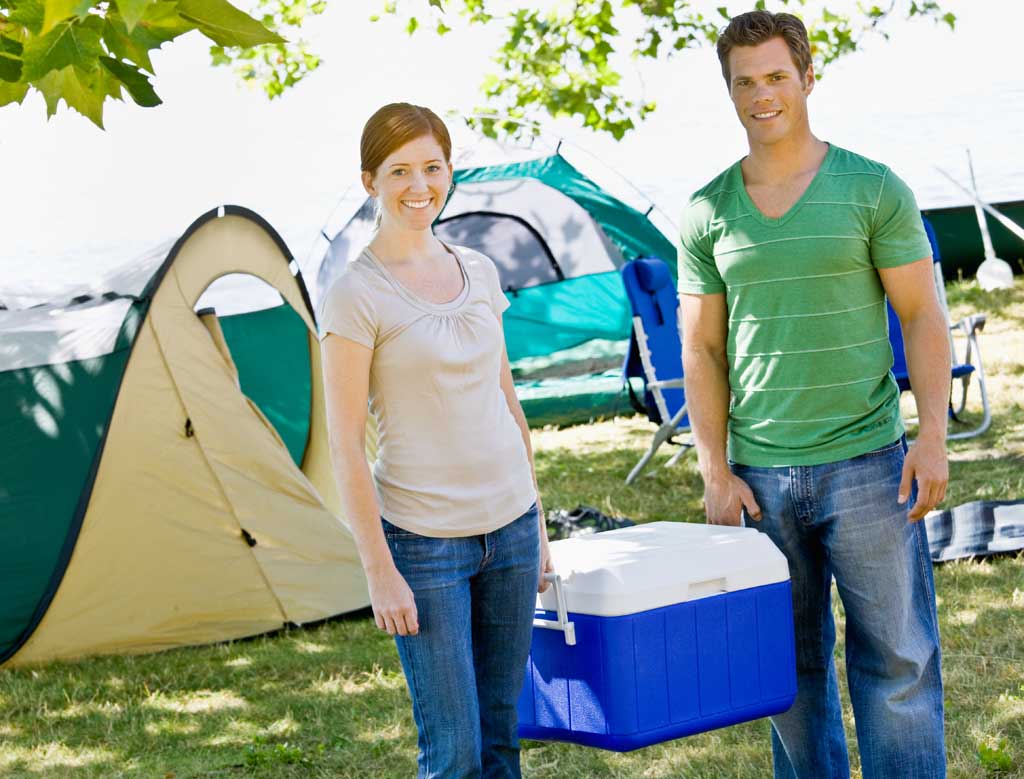Outdoor activities like hiking and camping are great ways to exercise and revive the spirit and mind. But, they also create hunger after a long exciting day. If the food that has been brought is not handled properly, food illness can occur and end your trip short.
 Image Source: Shutterstock
Image Source: Shutterstock General Food Safety Rules for Outdoor Eating
- Plan ahead: decide what you are going to eat and how you are going to cook it; then plan what equipment you will need.
- Pack safely: use a cooler if car-camping or boating, or pack foods in the frozen state with a cold source if hiking or backpacking.
- Separate: Keep raw foods separate from other foods.
- Keep Cool: Never bring meat or poultry products without a cold source to keep them safe.
- Keep Clean: Bring disposable wipes or biodegradable soap for hand- and dishwashing. make sure to clean your hands before and after handling food.
- Safe Water: Plan on carrying bottled water for drinking. Otherwise, boil water or use water purification tablets.
- Do not Litter: Do not leave trash in the wild or throw it off your boat.
- Discard Leftovers: If using a cooler, leftover food is safe only if the cooler still has ice in it. Otherwise, discard leftover food to be safe.
- Learn about foodborne pathogens, cross contamination, cold and hot food safety, and best practices to prevent foodborne illness.
- Food Manager ANSI Certification: $99.00 - Valid in all States
- Food Handler Training: Only $7.00!
- 10% OFF: Enter Promo Code "train10off" at Checkout
Food Safety for Hiking & Camping
Short Hike: One meal and some snacks are all that’s needed for a short hike.
Long Hike: Planning meals for a longer hike or camping trip requires more thought. You have to choose foods that are light enough to carry in a backpack and that can be transported safely.
 Image Source: Shutterstock
Image Source: Shutterstock Keeping perishable foods cool is a must while hiking and camping. When food temperatures exceed 40°F, bacteria start to grow, and items like raw meat, eggs, milk and some precooked foods begin to spoil.
Bacteria multiply rapidly between 40°F and 140°F. To keep food out of this “Danger Zone,” keep cold food cold and hot food hot.
The Cooler
- Cool food prior to leaving. A cold cooler for perishable food is essential. Pack your coolers with several inches of ice, blocks of ice, or frozen gel-packs. Store food in watertight containers to prevent contact with melting ice water.
- Freeze or Cool Items Prior to Trip. Freeze items that can be frozen at home prior to leaving. Items like juice boxes, hamburger patties, individual chicken breasts and hot dogs can be frozen and can slowly thaw in your cooler for you to use on your trip. Put sodas, jelly and other items that will end up in your cooler in the refrigerator overnight.
- Bring two coolers: Bring one cooler for drinks and snacks and another for perishable food. The drink cooler will be opened and closed a lot, which lets hot air in and causes the ice to melt faster
- Keep Cooler in Shade. It is important to keep it closed, out of the sun, and covered, if possible, for further insulation.
 Image Source: Shutterstock
Image Source: Shutterstock Summary
Camping and hiking can be a lot of fun. Just remember to plan ahead and pack food properly and safely or a food illness can occur.
